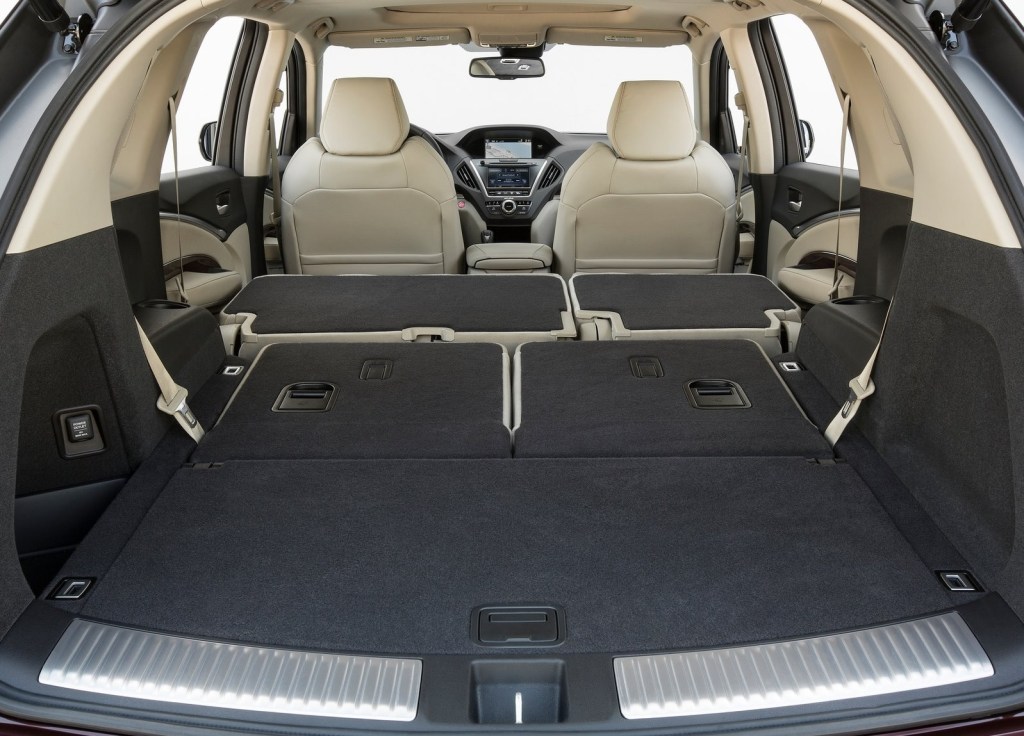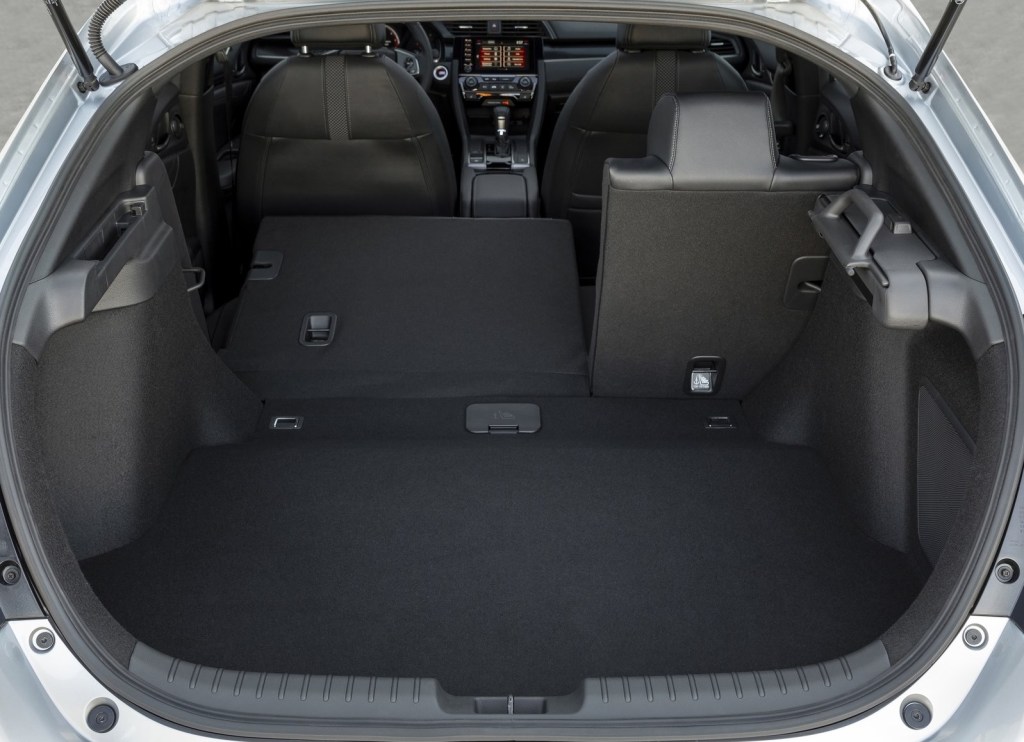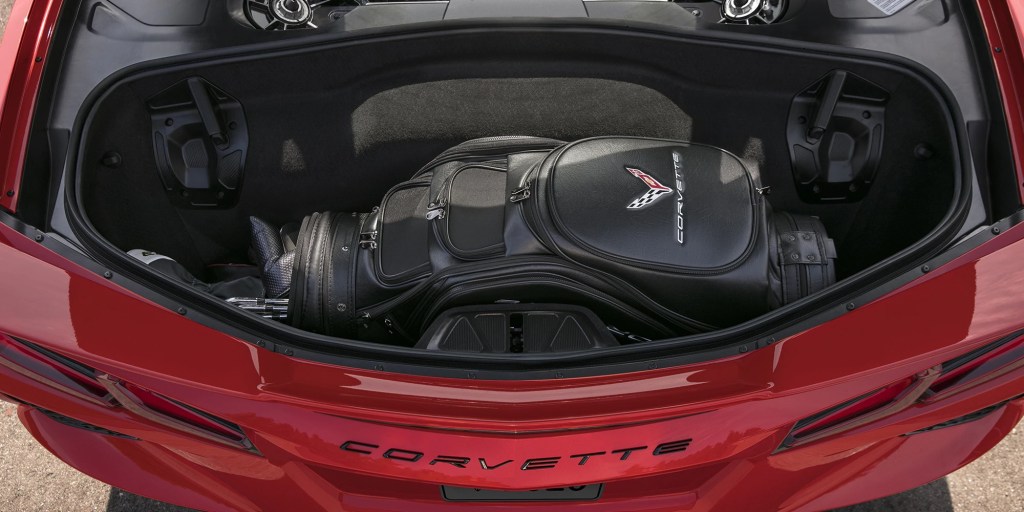
Are You Getting Fooled About Your Car’s Cargo Space?
Although large vehicles can be awkward in small spaces, they do have several benefits. One of those is cargo space. Whether you go for a 3-row SUV or minivan, these types of vehicles are bought in part due to their carrying capacity. However, just like 0-60 times, range, and even horsepower, a car’s cargo space figure isn’t necessarily real-world accurate.
How car cargo space figures can be misleading

Cars.com demonstrates the issue of car cargo space with the Acura MDX crossover. For its 2014 redesign, Acura reports the MDX gained cargo space. Before then, it had 83.5 cubic feet of storage; after, it had 90.9. However, in actuality, the 2014 MDX had less cargo space: only 68.4 cubic feet. That ’90.9’ figure is due to a technicality.

The larger cargo space number was achieved by combining areas. Acura wasn’t only measuring the rear storage area. It was also adding the space between the front and rear seats with the front seats pulled forward. So, theoretically, a 2014 Acura MDX driver could carry 90.9 cubic feet worth of stuff. Though only if anyone else in the crossover was okay with having literally no legroom.
But, as Cars.com and Truck Trend explain, Acura wasn’t actually misrepresenting the MDX’s capacity. The automaker followed the Society of Automotive Engineers’ industry standard to measure the car’s cargo space. This standard, J1100, was first introduced in 1973, and revised multiple times, the last time being in 2009. However, automakers can choose which J100 version they use, so long as they state this information explicitly. This is why you always read the website’s fine print.
And there’s no consistency between automakers, or even within one automaker’s lineup, which J1100 version is used. For example, Cars.com reports Toyota uses the 1975 revision, due to EPA mandates regarding vehicle classification. Honda reportedly uses the 2005 version. But the pre-2014 MDX was measured with the 2002 version and the 2014 version with the 2009 revision.
But even if two cars use the same cargo space standard, comparing their capacities isn’t necessarily a straightforward task.
The difficulty in comparing different cars’ cargo spaces

For one, even if you’re comparing similar vehicles like the Chevy Traverse and Ford Explorer, they’re not shaped exactly the same. One might have a flatter floor, while another could have interior panels that are less curved. So even if two different cars have numerically identical cargo spaces, one could be easier to pack than another.

In addition, Popular Mechanics reports that not every single vehicle’s cargo area is measured the same way. Something with an enclosed trunk, like a sedan, has its trunk space measured via standardized blocks. For something like an SUV or hatchback, though, which doesn’t have a separate trunk, automakers measure length, width, and height.
Furthermore, not having an enclosed trunk can make some people think they have less cargo space than they actually have. In his Popular Mechanics interview, Dr. Stanley Coren, a psychologist and perception expert, explained that looking at a proper trunk, you imagine a kind of enclosed box. But for something like a hatchback, your mind only imagines what fits on the floor, not what can get stacked higher.
However, there are ways to better estimate how much cargo space your car has.
What can you do about this?
If you’re looking into getting a new or used vehicle, simply take a tape measure or ruler with you when you check the car out. Not only can you get an accurate measurement, but you can also sit in the driver’s seat and gauge visibility. The car you’re looking at may have more cargo space than your existing one, but that may only be possible by stacking boxes up so high, you can’t see out the back.
Speaking of boxes, that’s also another way of looking at a vehicle’s cargo capacity: measure with typical baggage. The C8 Corvette, for example, had to be able to carry multiple sets of golf clubs. YouTube team The Straight Pipes typically use actual boxes to measure cargo space.

Plus, using physical items to measure cargo capacity is useful in another way. It lets you know how easy it is to load and unload cargo from your car. Can you pass through longer items, as in the Bollinger B2? Can you drop the rear seats quickly? Are there odd angles or places where things can get caught or snagged?
Verifying car cargo space can be a bit of a hassle. But it can be done.
Follow more updates from MotorBiscuit on our Facebook page.






